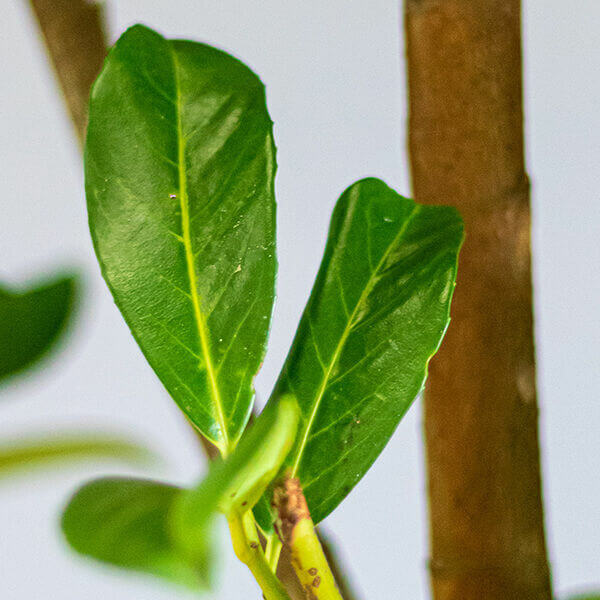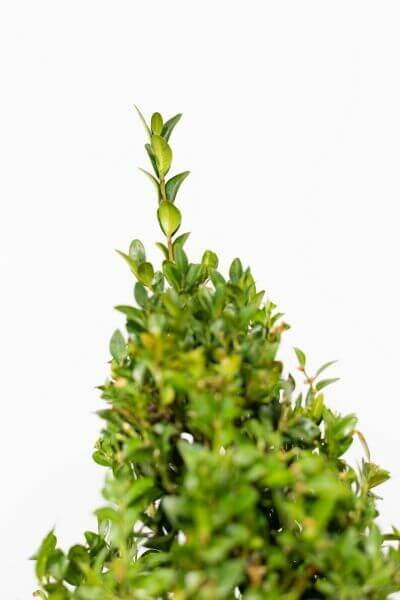Hedge Plants For Courtyard Gardens
Enhance your garden's allure with lush hedge ranges such as Yew (Taxus), Thuja, Laurel, Photinia, and Bamboo, commemorated for their structural stability and environmental benefits.
Yew and Thuja provide evergreen protection and winter season strength, while Laurel uses fast growth and broad, fragrant leaves.
Photinia includes seasonal appeal with its dynamic red foliage, and Bamboo lends a low-maintenance, tranquil ambiance.
These hedges improve air quality, decrease noise, and develop tranquil, personal spaces.
Proper planting, spacing, and upkeep make sure vigorous development and eco-friendly harmony.
Explore how these lavish ranges can elevate your garden's appeal and well-being.
Key Takeaways
Change Your Garden With Lush Hedge Varieties
- Select Yew for its thick, evergreen development and unrivaled durability.
- Select Laurel for its fast development and broad leaves, guaranteeing fast privacy.
- Choose Photinia for its dynamic seasonal foliage, which turns a striking dark red.
- Utilize Bamboo for a low-maintenance, winter-hardy hedge with visual appeal.
- Space plants 2-3 per meter and prune frequently for ideal development and health.
Popular Hedge Plants
When transforming a garden with lavish hedge varieties, it's important to consider popular hedge plants such as Yew, Thuja, Laurel, and Photinia due to their special qualities and advantages.
Yew (Taxus) is highly respected for its longevity and dense, green development, making it a prime choice for withstanding landscapes.
Thuja is noted for its evergreen foliage and robust winter strength.
Photinia adds seasonal vibrancy with red leaves that darken gradually, developing dynamic visual appeal.
Laurel provides quick growth and aromatic, broad leaves, perfect for quick personal privacy.
Additionally, Bamboo is an exceptional choice for ambiance, using a low-maintenance, winter-hardy option that enhances the garden's visual with its classy, swaying canes.
These choices cater to a variety of horticultural needs and choices.
Advantages of Garden Hedges
Garden hedges offer a wide variety of advantages, making them an important addition to any landscape. These natural barriers are cost-effective to execute and offer substantial wind defense, enhancing air circulation and contributing to noise reduction. The thick foliage of hedges like Thuja and Beech guarantees personal privacy by blocking presence, developing a serene and secluded environment.
Hedges also play an essential role in microclimate policy, offering a stable environment that promotes plant growth and reduces temperature changes. Their elaborate leaf structures filter toxins, enhancing air quality and adding to a healthier garden community.
Furthermore, hedges master noise reduction, absorbing and deflecting sound waves to lower ambient sound levels. This double performance of providing both visual and acoustic privacy enhances the total tranquility and aesthetic appeal of any garden.
Planting and Maintenance Tips
For a successful hedge, precise preparation of the planting location is important. Guarantee the soil has appropriate pH and drain to support strong root development.
Space the plants appropriately for the picked types. Water the hedge often during its preliminary development phase, adjusting as required with seasonal changes.
Implement a organized insect control and disease avoidance technique, using natural or chemical treatments when required. Frequently examine for aphids, mites, and fungal infections.
Apply mulch to maintain moisture and reduce weeds. Seasonal pruning promotes dense growth and air flow, important for plant health.
Following these standards will help you cultivate a vibrant, well-maintained hedge that boosts the charm of your garden.
Spacing and Cutting Guidelines
Spacing and Cutting Guidelines
Correct spacing and trimming are vital for cultivating healthy, visually appealing hedges. Appropriate spacing ensures each plant gets sufficient nutrients, light, and air flow.
Follow these guidelines for optimum hedge maintenance:
- Spacing: Position hedge plants 2-3 plants per meter to motivate robust growth.
- Pruning Methods: Routine pruning is important for keeping desired hedge height and shape. Trim brand-new development in summer and cut down older wood throughout winter season.
- Seasonal Care: Adjust trimming approaches and schedules according to seasonal requirements to ensure plant health.
- Hedge Height: Regularly screen and cut to keep the wanted hedge height and achieve uniform visual appeals.
Following these steps will ensure your hedge prospers, boosting both the appeal and performance of your garden.
Picking the Right Hedge
Picking the Right Hedge
Selecting the appropriate hedge involves evaluating elements such as mature height, foliage density, get more info and ecological strength. Successful hedge plant choice needs comprehending each types' development characteristics and site-specific adaptability.
For instance, Yew (Taxus) uses outstanding longevity and dense growth, while Thuja is notable for its winter strength. Additionally, considering maintenance requirements is essential; fast-growing species like Laurel or Privet demand regular trimming, whereas low-maintenance alternatives like Bamboo or Ivy may be preferable for those looking for very little upkeep.
Environmental aspects such as soil type, light accessibility, and moisture conditions need to likewise direct the selection procedure. This cautious approach makes sure the selected hedges will thrive, supplying both aesthetic and practical advantages to the garden landscape.
Delivery and Planting Suggestions
To ensure your hedge plants flourish, they should be provided by specialized couriers and planted immediately upon arrival.
Follow these essential actions for successful planting:
- Soil Preparation: Enhance the soil with natural matter to improve drain and nutrient content.
- Planting Depth: Produce a trench two times the width and equal to the depth of the root ball.
- Watering Strategies: Water thoroughly after planting, keeping the soil regularly moist but not filled.
- Mulching: Use a layer of mulch to retain wetness and reduce weeds.
Customer Support and Service
Provided the vital role of timely help in horticultural pursuits, our customer support group is readily available six days a week through telephone, email, and social networks to offer professional suggestions and swiftly deal with any concerns. Their commitment to fast action times ensures customer complete satisfaction by resolving inquiries associated with plant health, optimal planting methods, and maintenance schedules.

-------------------
Within 48 hours
This thorough assistance system, strengthened by a stellar 9.3/ 10 customer ranking, highlights our dedication to enhancing the gardening experience for every customer.
Often Asked Questions
The Length Of Time Does It Consider Hedge Plants to Establish?
Hedge plants generally need one to three years to end up being completely established, with the specific duration differing by species and growing conditions.
Reliable care during this critical duration is necessary for robust development. Consistent watering, alert weed control, and appropriate fertilizer application are essential in promoting strong root development.
For instance, fast-growing species like Laurel might establish faster, while slower-growing varieties such as Yew might take longer. Thorough maintenance speeds up the establishment procedure, resulting in thick and healthy hedges.
What Are the very best Hedge Plants for Privacy?
The concern of the best hedge plants for privacy includes evaluating evergreen and deciduous choices.
Evergreen hedges like Thuja, Laurel, and Cypress supply year-round coverage, guaranteeing constant privacy.
In contrast, deciduous hedges such as Beech provide seasonal personal privacy, shedding leaves in colder months.
Secret maintenance ideas for personal privacy hedges include regular trimming, fertilizing in spring, and correct spacing-- typically 2 to 3 plants per meter.
Furthermore, constant watering and diligent weed removal are essential for promoting healthy, thick development.
Can Hedge Plants Attract Wildlife to My Garden?
Yes, hedge plants can attract wildlife to your garden by offering vital advantages like shelter, food, and nesting websites, therefore boosting regional biodiversity. For instance, yew, holly, and laurel are excellent for drawing in birds, while ivy supports a variety of bugs.
However, it's crucial to keep in mind that there are some downsides, such as increased maintenance to handle bugs and regular maintenance. Thoroughly picking and keeping hedge ranges can help balance these drawbacks and advantages, eventually promoting a dynamic and sustainable ecosystem in your garden.
Exist Any Blooming Hedge Plants Available?
Yes, there are flowering hedge plants offered that can improve the beauty of your garden.
For instance, Elaeagnus, likewise called Olive Willow, produces fragrant white flowers in the fall, including a touch of beauty.
Photinia, another popular choice, showcases lively red leaves that develop into a rich green, developing a vibrant visual effect throughout the seasons.
To make sure these plants prosper, it's necessary to practice proper pruning strategies and seasonal maintenance, such as cutting new development in the summertime and cutting back in the winter season.
These procedures will help keep the health and aesthetic appeal of your blooming hedges.
How Do I Prevent Bugs in My Hedge Plants?
To prevent bugs in hedge plants, employ natural bug control methods and preserve proper hedge care. Present beneficial bugs like ladybugs, which prey on hazardous insects, to produce a balanced community.
Routinely inspect your hedges for signs of problem and without delay get rid of any affected parts to prevent the spread. Make sure the health of your hedges by applying balanced fertilizers and supplying appropriate water.
Use mulching to retain soil moisture and correct spacing to decrease plant stress and promote robust development. These practices collectively assist in lessening pest concerns and preserving a healthy hedge.
Conclusion
In essence, choosing the ideal hedge varieties such as Yew, Thuja, and Laurel can change any garden into a peaceful sanctuary. These plants provide year-round plant, enhance aesthetic appeal, and deal practical advantages like noise reduction and wind defense.
Proper planting methods, precise spacing, consistent watering, and seasonal cutting are vital for ideal development.
Trusted delivery services and professional consumer support guarantee a smooth experience from purchase to planting, making it easier than ever to elevate your outdoor area.
Garden hedges use a wide range of advantages, making them an important addition to any landscape. These natural barriers are affordable to execute and supply significant wind protection, improving air blood circulation and contributing to sound decrease. The dense foliage of hedges like Thuja and Beech guarantees privacy by obstructing presence, developing a tranquil and secluded environment.

Pruning Strategies: Regular pruning is essential for keeping preferred hedge height and shape. Trim brand-new growth in summer season and cut back older wood during winter season.